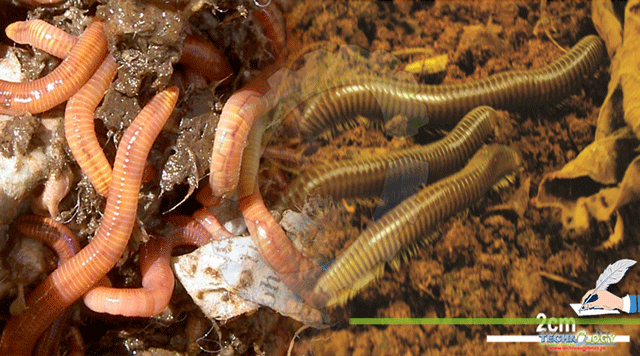Bioindicators are naturally occurring species that are used to find out the condition of environment and they are basic tools to identify modifications in environment society.

By Husnain Hayder, Muhammad Uzair, Muhammad Kasib Khan, Muhammad Adnan Sabir Mughal
Bioindicators Introduction:
It may be positive or negative factor; it may have relative impacts on human. There are many elements that impart the attendance of bioindicator in society likewise transfer of water, heat and hanged solid by using scope of bioindicators. we can find out real position of established areas or sites of dirtiness, impacts of natural and biolistic elements on outer and inner part of earth and underneath water in village and city areas.
Benefits of Bioindicators:
The benefits of using bioindicators are given below:
Biological effects can be noticed to control additive and to monitor synergetic and opposite effects of different pollutant on nature. Prior forms of identification as well as adverse effects of toxicants on herb and men can be determined. Economically workable alternative every other when contrasted with some other important calculatory systems. Can be added with no effort, because of their spredness.
There are many Elements that are involved as bioindicator like as the use of Cadmium by aquatic microbiota, was dependent on sometime before, cadmium amount in the communication, growing period and light. It was studied to find out the impacts the Selenium and Cadmium usage. The certain varieties were taken under study in two -folds analytical pattern that were Cd 90.5 and 2μM), Se^+4 (0·5 and 2 μM) and duration (1 and 25 h). The studied showed that there was cadmium amount in algae. Due to presence of Se the usage of Cadmium is increased at maximum level with the passage of time.
By examining amount of lead and cadmium in different body parts such as liver gonads intestine and muscels of the Fish Carcharhinus dussumieri and its parasites, Anthobothrium sp. and Paraorigmatobothrium sp. (Cestoda), were measured as well as contrasted. Models of body tissues were gathered from Iran and intercoastal waters of the Persian Gulf. After histo slide preparation, the amounts of cadmium and lead were observed applying the collectively Coupled Plasma technique. The results showed that lead and cadmium presence in each parasite were much times greater in amount than in the host body parts such as tissues. The awards definitely give strength to the idea that helminth are largely more delicate prior warned bioindicators, especially in delicate ecosystem under hazard but where dirtiness levels are experimentally low. These all can have some profitable effects on mindset and health of the host body by the process of elements like as Lead and Cadmium, these are heavy metals.
Contamination in aquatic environments due to negative human exercises remains an issue in both freshwater and marine situations and is a progressing subject of research. Recent studies show that many fish parasites accumulate higher levels of metals in, despite of present in host tissues which can be used for biomonitoring. The information about the mechanism of absorption and rate of accumulation is proportionally limited as in nematodes in comparison to acanthocephalans. By using the technique of inductively coupled plasma mass spectrometry the larval stages of Contra caecum species (L) has potential of being used as indicators for checking contamination with metals in host Acestrorhynchus lacustris by inducing in parasites and examining concentrations of thirteen different element which contain: titanium (Ti), iron (Fe), zinc (Zn), aluminum (Al), lead (Pb), cadmium (Cd), chromium (Cr), barium (Ba), nickel (Ni), magnesium (Mg), arsenic (As), manganese (Mn), and copper (Cu). The outcomes of our research show that the larvae of Contra caecum species can be utilized as bioindicators of metal defilement since indeed in early stages of improvement, various fundamental and non-essential components were collected, making this framework a valuable tool for observing contaminated environments.
Advancements
Helminthes (parasites) are paying attention of Ecologists as prospective indicator of ecosystem quality due to many ways by which these show response to anthropogenic dirtiness. Moreover, till today nothing is known about the presence of toxic agents in parasites. Many Parasites essentially gastrointestinal cestodes and acanthocephalans of aquatic life especially fishes can add up elements like heavy metals in high amount which give a specific amount higher in concentration as compared to in host body tissues and ecosystem. As a result of it, Horst Taraschewski, Bernd Sures and Roy Siddall have found out to explain the process of noticeable the alloy presence by helminths and at how much level it may be applicable to ecological observations. likewise, they propose how ecological study may be beneficial in near future.
Applications:
Astonished problems regarding applications of parasite as identifier of ecological effects in the presence of variance in designing quantification and analysis of happening surveys. It has authority to choose of ecological varieties, the analyzing ways that are used and statistical ways are applied to find out or notify external ways of relation. The recognition and calculation of helminths (parasites) is a difficult work in ecological parasitology, however newly formed machineries techniques are making better the capacity for Taxonomic recognition. There is another chance that is bar coding which require more and more work during modeling but it is only aplicable for Molecular recognition.
Microscopic instruments as well as give chances to fulfil the time usage phenomena for counting of separate tests: quantitative PCR is being used extensively to make better the phenomena as it is told by Remis and Hungand and also preservative sampling – used for identification cipher, shellfish and other aquatic animals – There is also a chance in it. Parasites in economically hazards are showing changes in condition of host defense system. We that’s why recommend that while studying parasitological surveys it shows that there are many changes related to hosts defense system and its main points must be studied. ethoxyresorufin-O-deethylase activity Cytochrome P450 1A, lipid peroxidation, histological data, and can be beneficial during studying data for important relations.